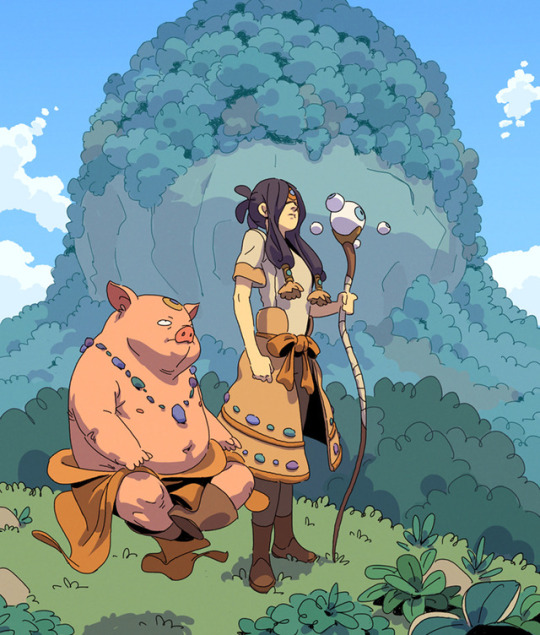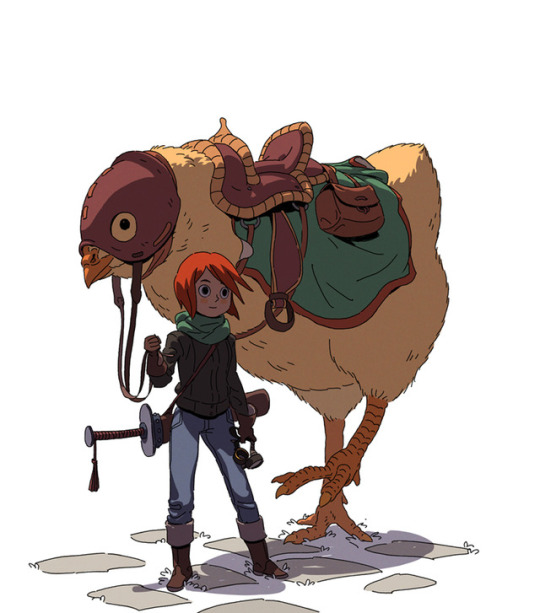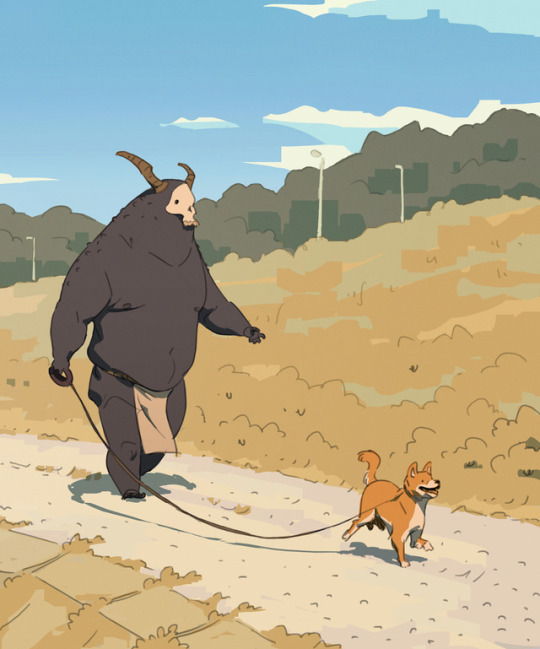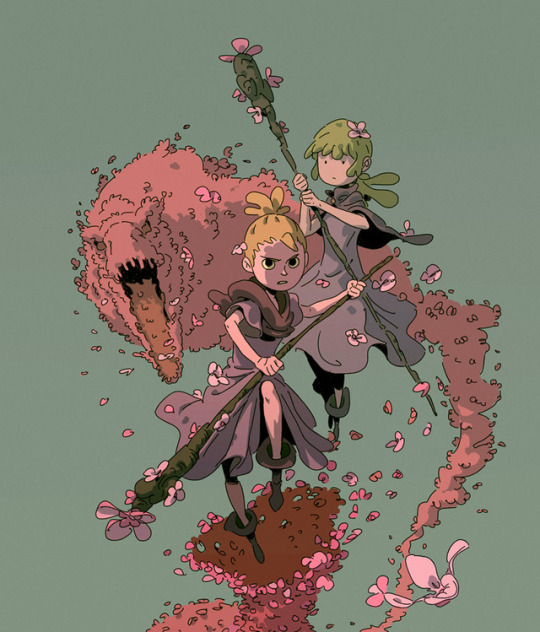Photo

What was that…?
I loved this episode but the hand thing made me first think of quacking and then this.
8K notes
·
View notes
Text

Joining mermay with @odnatamyara ‘s draw this in your style 💕
#mermay#mermaychallenge#mermay2019#drawthisinyourstyle#drawthisinyoustylechallenge#watercolor#watercolour art#watercolourpainting#watercolour illustration#watercolour
0 notes
Text

My gymleader sona
These pokemon have a really important place in my heart!
#pokemon#pokeball#gymleadersona#pokémon#anime#copic art#copic markers#copicmarkers#copic#art challenge#may art#fan art#my art#art#character design#drawing#sketch
8 notes
·
View notes
Text

Just a "Rose"
#steven universe#pink diamond#rebecca sugar#su pearl#pearl#su fan art#fan art#copic art#copic markers#copicmarkers#copic#art challenge#visdev#myartstyle#my art#cartoon#cartoon network
4 notes
·
View notes
Text
Commission prices

Here are my commission prices if you are interested messenge me or email me on [email protected]
1 note
·
View note
Text
Metsona
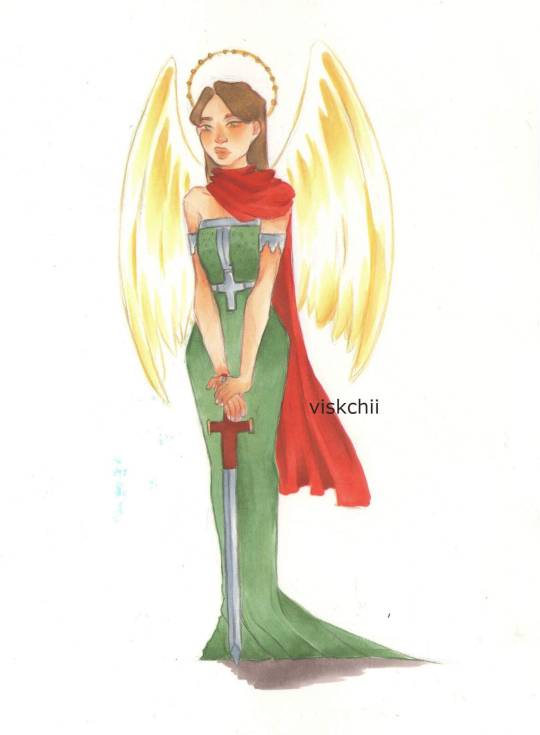
Here is my own metsona based on the Christian Orthodox archagel Michael
#met gala#metgalasona#metsona#met gala2018#copic art#art challenge#may art#my art#art#artist#artists on tumblr#copic markers#copic#copicmarkers#challenge#drawing#design#original character#character design#my characters#visdev
6 notes
·
View notes
Text

Old but still loved
#drawing#visdev#sketch#ink#illustration#illustrator#my art#myartstyle#artists on tumblr#art#copic art#black and white
4 notes
·
View notes
Text

Another Mermay~
I really like this one
#mermay#mermaychallenge#visdev#copic art#art challenge#may art#my art#myartstyle#copic#challenge#copicmarkers#comics#drawing#art
19 notes
·
View notes
Photo
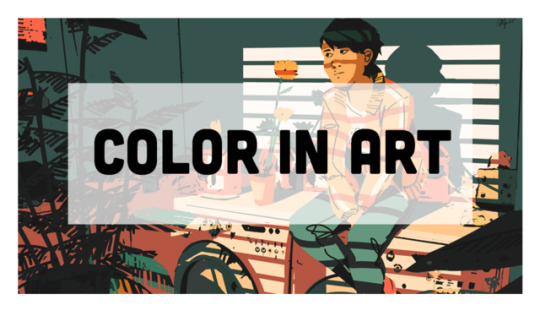
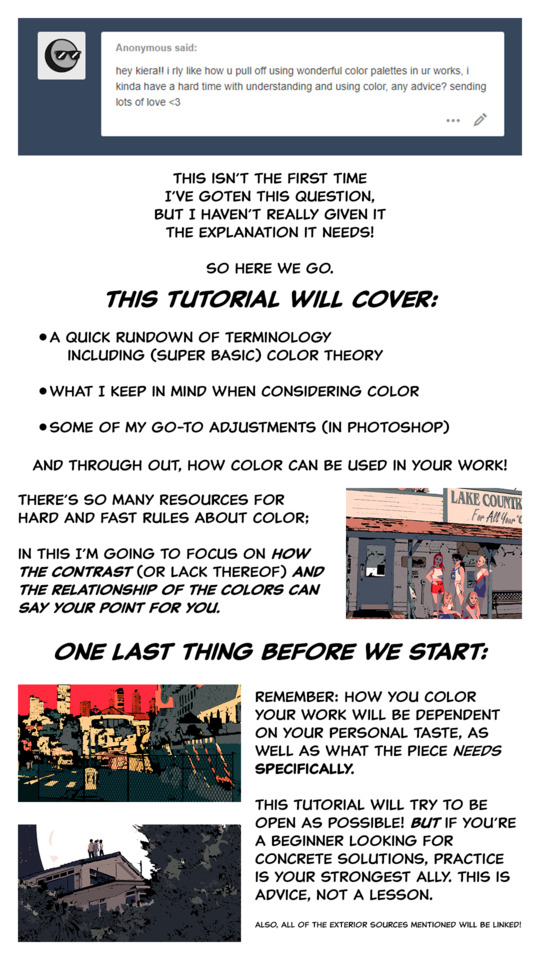


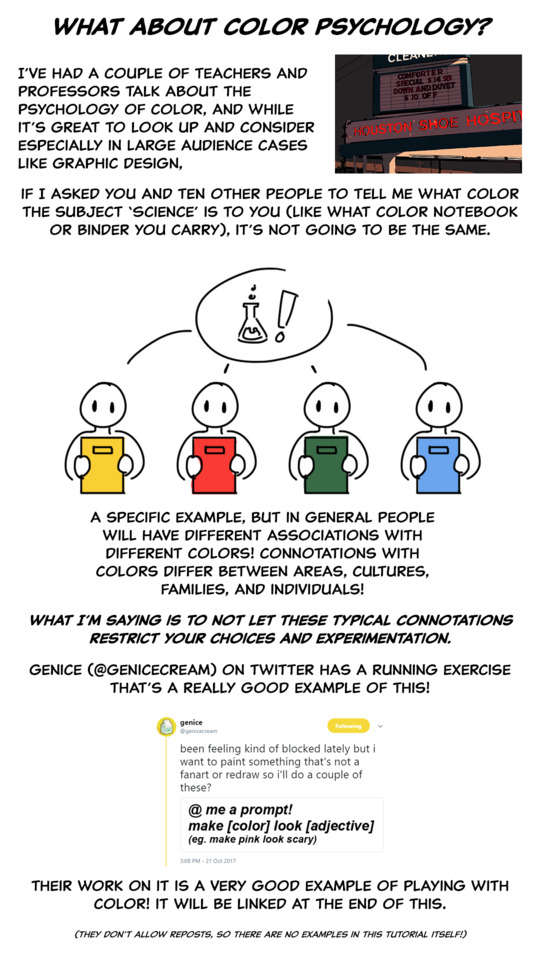
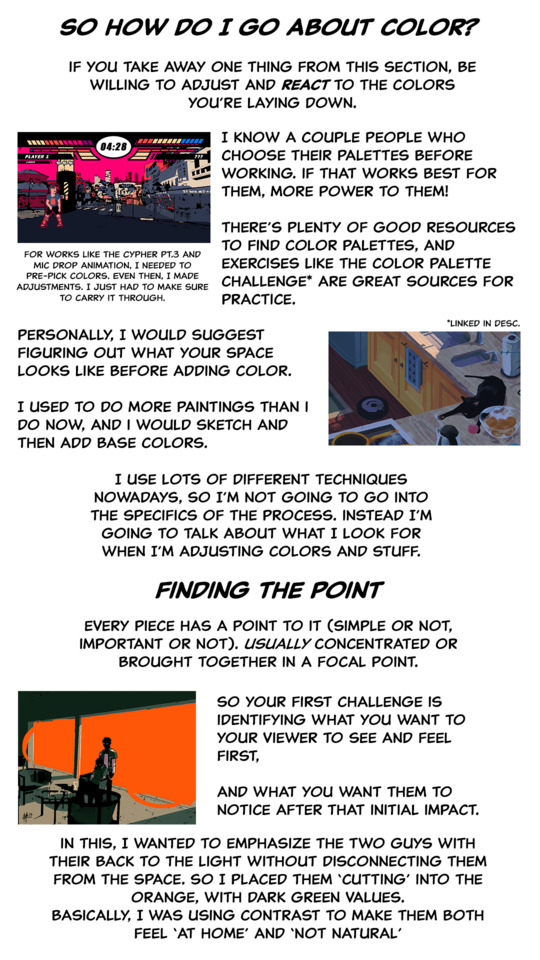
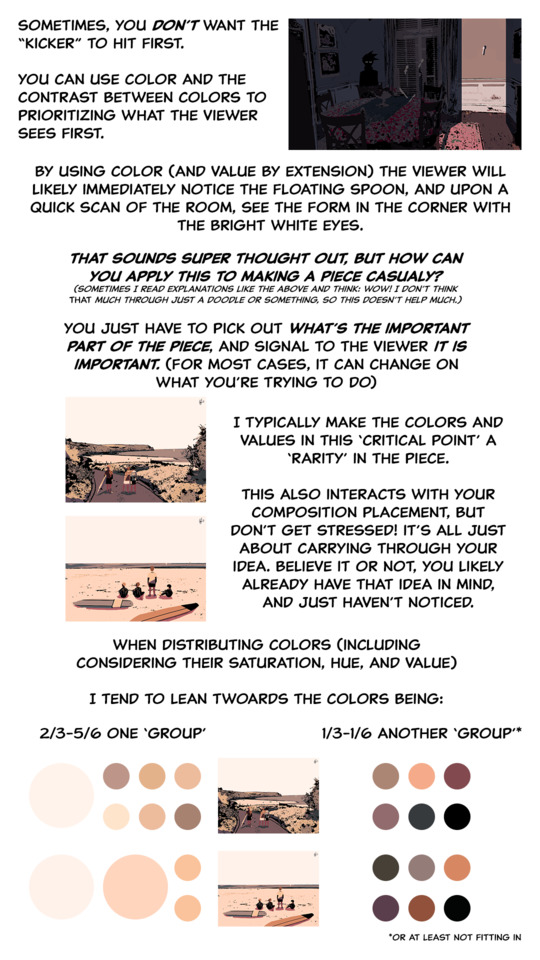
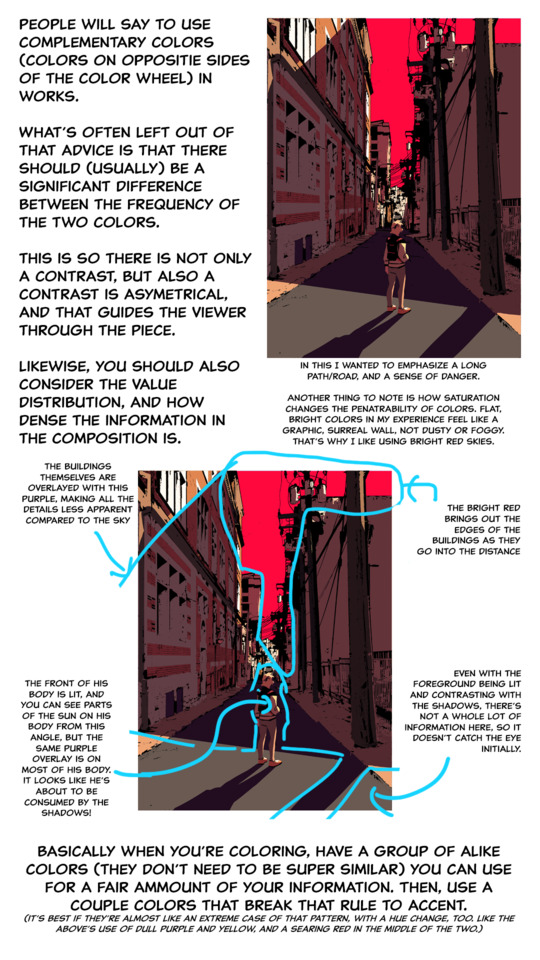
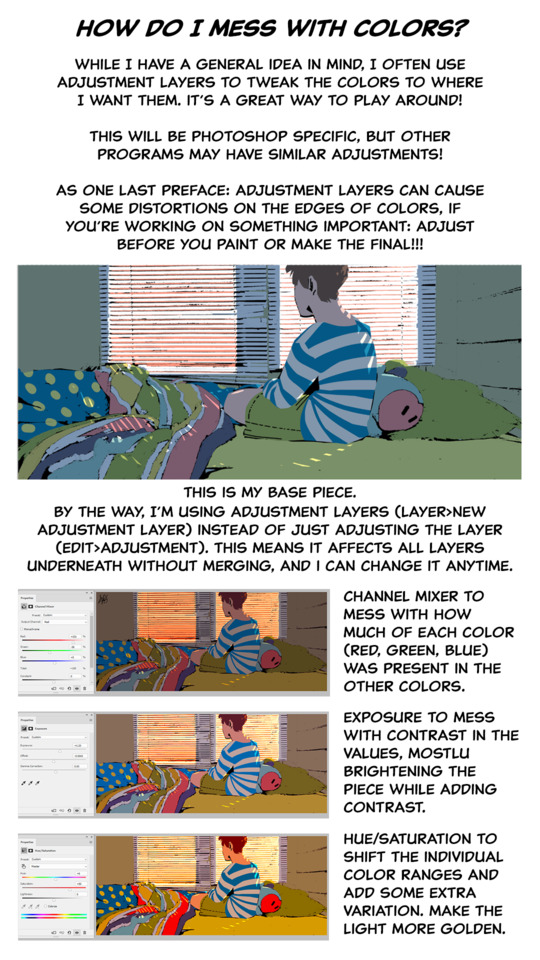
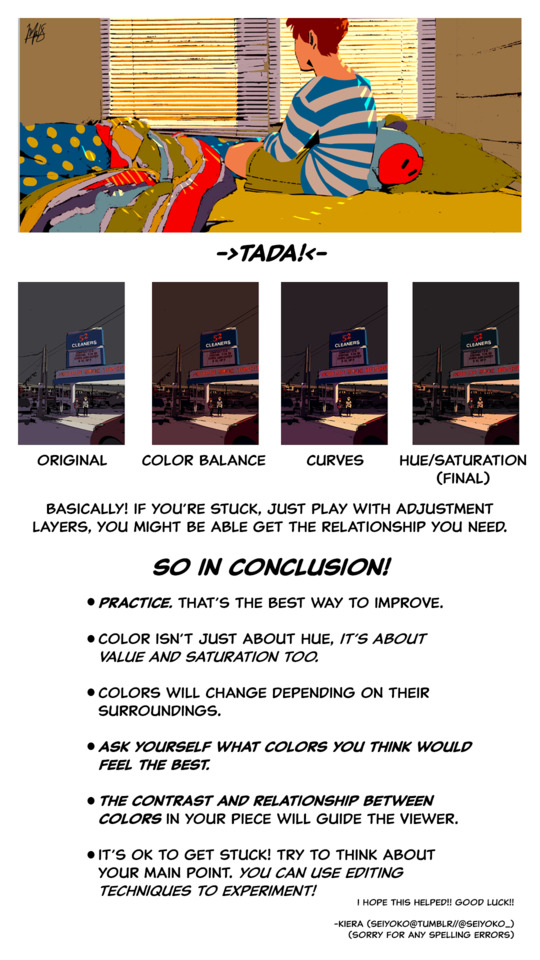
Again this is my personal take on color! It really depends on the situation and what you personally value, and in the end practice is your best friend.
links:
genice’s color practices
color palette challenge (one iteration of it; there’s lot of people who made them)
(not mentioned, but helpful)
Patrick (H) Willems’s video essays on color in film; specifically his ones on
Wonder Woman and Marvel
I thought he had one on John Wick too but I can’t find it. If you like saturated colors though, check that movie out!!
those are only a couple of exterior references, there’s lots out there!! so good luck & I hope this helped!!
26K notes
·
View notes
Text
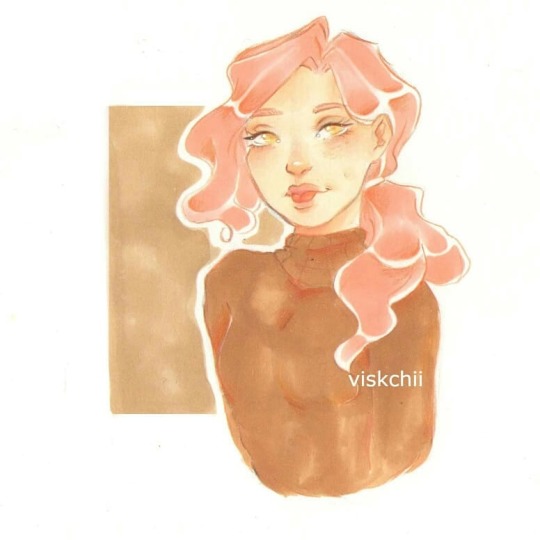
Joining an event on instagram~
#challenge#art challenge#copic#copicmarkers#copic markers#copic art#visdev#my art#myartstyle#semirealistic#drawing
2 notes
·
View notes
Text

Mermay day 3
Finally got time to join!
First mermay of the year~💙
7 notes
·
View notes
Text
Webcomic tips
In the conclusion for now, some things I’d really recommend doing if you’re seriously considering making a webcomic (or really a comic in general). Some of these don’t really apply to strips or gag-a-day type of comics, but I’m not talking about those here.
1. Write down ideas\sketch stuff, LEGIBLY. “I’m gonna remember it later” NEVER works. And if you scribble it somewhere on a piece of paper, you’d better scan it or retype in one doc later, because tiny notes always get lost among other doodles in my skethbooks.

(i know it’s hard to keep everything clean and organized, but this mess is just not productive)
If your project is a collaboration, save your conversations. If you’re working alone, make a blog for your ramblings. You have no clue what tears of relief I cry when I open that blog and rememeber I don’t have to painstakingly look through my heaps of sketchbooks and folders for a tiny idea I’m not even sure I wrote down a few months ago.
2. Inspiration folders, or even better, inspo blog with tags also help with collecting and remembering ideas. Color schemes, landscapes, style inspirations, atmospheric stuff, maybe some photo references, all those neat things.

3. Basic tier: character design sheets. Top tier: common poses, expressions. God tier: outfits they wear throughout the comic. Holy cow tier: turnaround sheets for all those outfits.

(I’d die trying to find good pages for references without these)
4. If you haven’t finished detailing the plot, don’t even think about moving on to drawing the comic. You’re gonna regret it when you come up with a really cool plot element that can’t be incorporated anymore because you’ve already drawn all the parts you could’ve tweaked.
5. Don’t just define the plot, make a script. Writing down the lines and the brief description of the actions serves me fine:
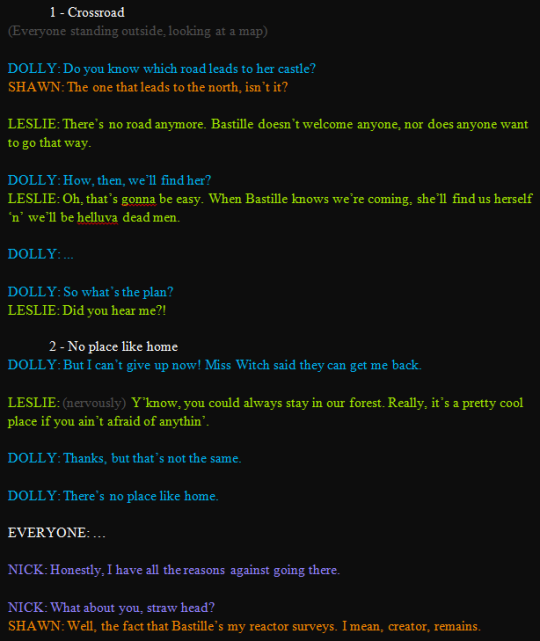
(notice that I approximately divided the pages & the text that’d go to each panel on a page)
6. Hard mode: make thumbnails for all the pages, if possible. At least whenever a new chapter starts.
7. If your story involves some convoluted chronology shenanigans, you’d better write down the events of your timeline in the chronological order.
8. Backgrounds. You can’t avoid them, bro. Like half of the comics are backgrounds, especially if your story involves a lot of adventuring and looking around. I know it hurts, but you’ll have to become friends with them. Read some tutorials, practice on photos, go out and sketch some streets, use 3d programs (like Google Sketch) to understand the perspective, use sites like houseplans to visualize your buildings better, I don’t know. Just be prepared for their imminent evil.
9. If you’re drawing digitally, pick a brush size for the lines and stick with it. You don’t want your lines and detail levels to look all wonky and inconsistent in different panels. And I don’t mean the cool stylistic varying lines, I mean this:
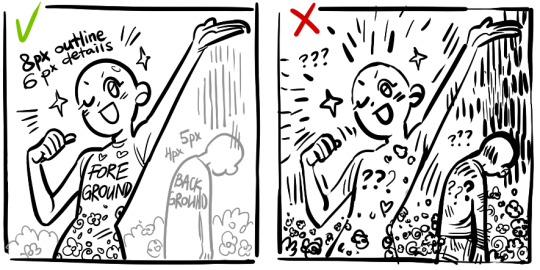
Also, things on the background should have thinner and/or lighter lines to avoid distraction. Usually less details too, unless you’re making a busy background with a simple foreground to help it pop out. Or wanna draw the attention to an object on the bg.
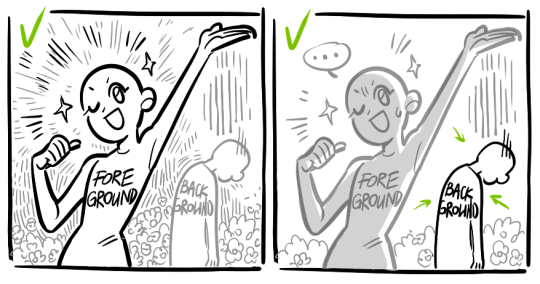
10. Readable fonts. Even if you chose to ignore people with poor sight or dyslexia, the majority of your readers aren’t gonna be excited about struggling to decypher this:
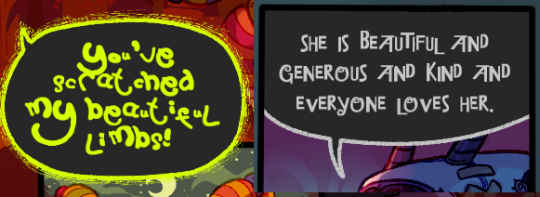
Also, as much as I love my black speech bubbles, colorful text on black still kinda hurts the eyes. I wouldn’t recommend doing that for all the characters. Black speech bubbles are usually used for creepy, inhuman voices. And yes, having a colorful outline in this case helps.
11. Probably newsflash, but did you know that panels have their place, order and functions? They do! My favourite thing ever is how I used panels when I was like 12:
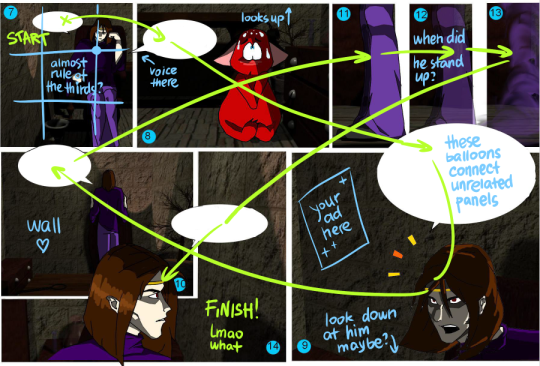
(comics ain’t rocket science, but this one is)
The composition of the panels and word balloons always serve for a better reading experience. They guide your eyes over the page, so that you never feel lost or confused. The images in the comic equal frames in a movie, so it’s pretty damn important in what order you look at things and how quickly you can understand what’s going on!
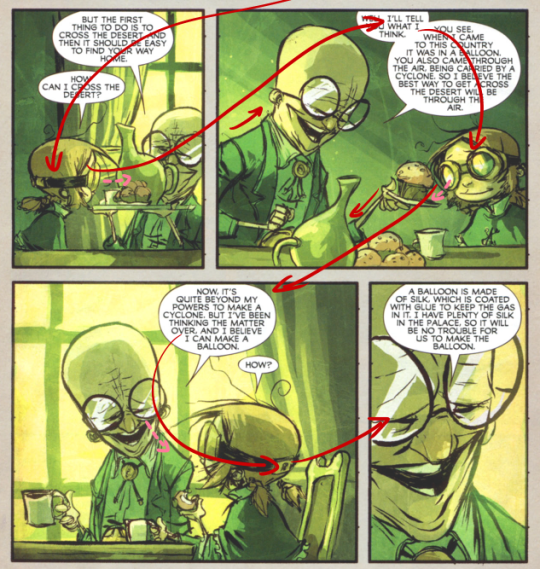
(Eric Shanower & Scottie Young’s Wizard of Oz)
12. One update a week is fine for testing waters. Don’t overestimate yourself, especially if you have a pretty busy life outside it. A stable comic that updates slowly, but regularly is better than an unpredictable erratic one. You can always pick up the pace later, if you feel confident enough.
13. Try to always have a buffer - a couple of pages in reserve. If you’re making the pages much faster than you’re updating, this shouldn’t be a problem. But if those paces are equally the same, it’s goddamn HARD. But on the other hand, if something happens and you skip an update, those come in handy.
If you’re looking at this list and thinking “wow that’s a LOT of work”, you’re totally right. And it’s okay to be intimidated at first! But that’s why it’s important to start with something small. Once you get the formula down, these things will be natural to you.
48K notes
·
View notes
Text
Lore Olympus
Lore olympus webcomic fanart
Im suck a big fan of this webcomic💖

13 notes
·
View notes
